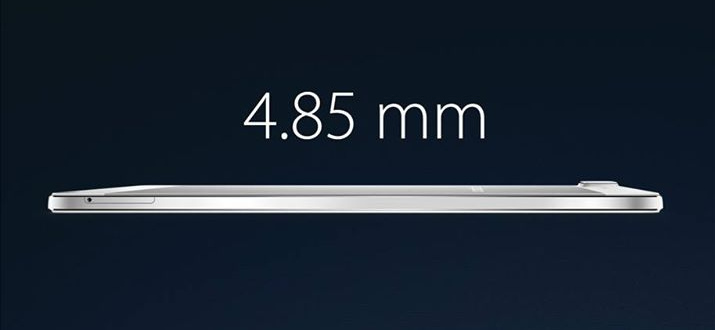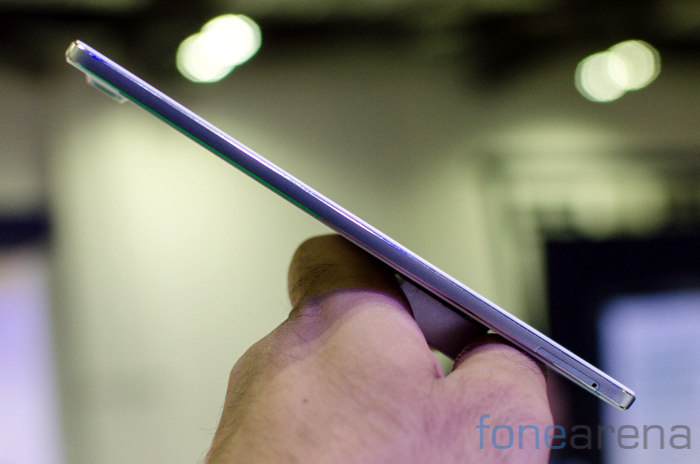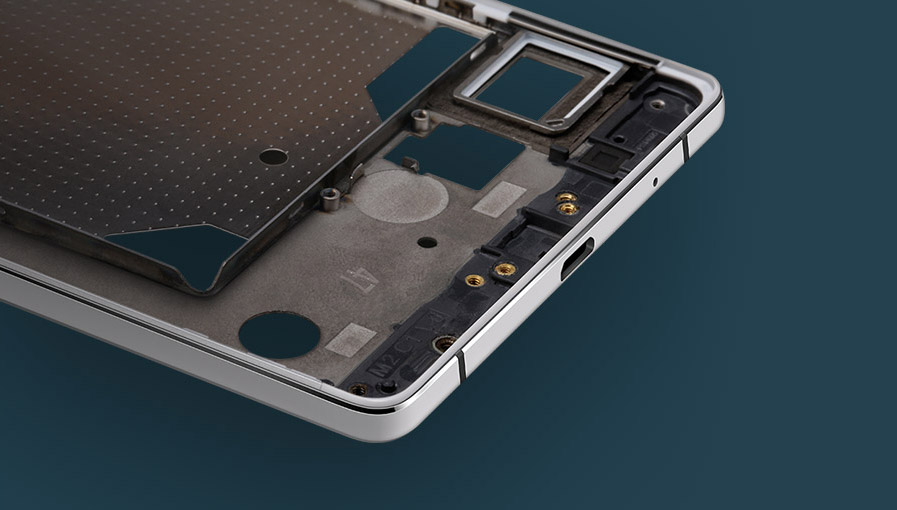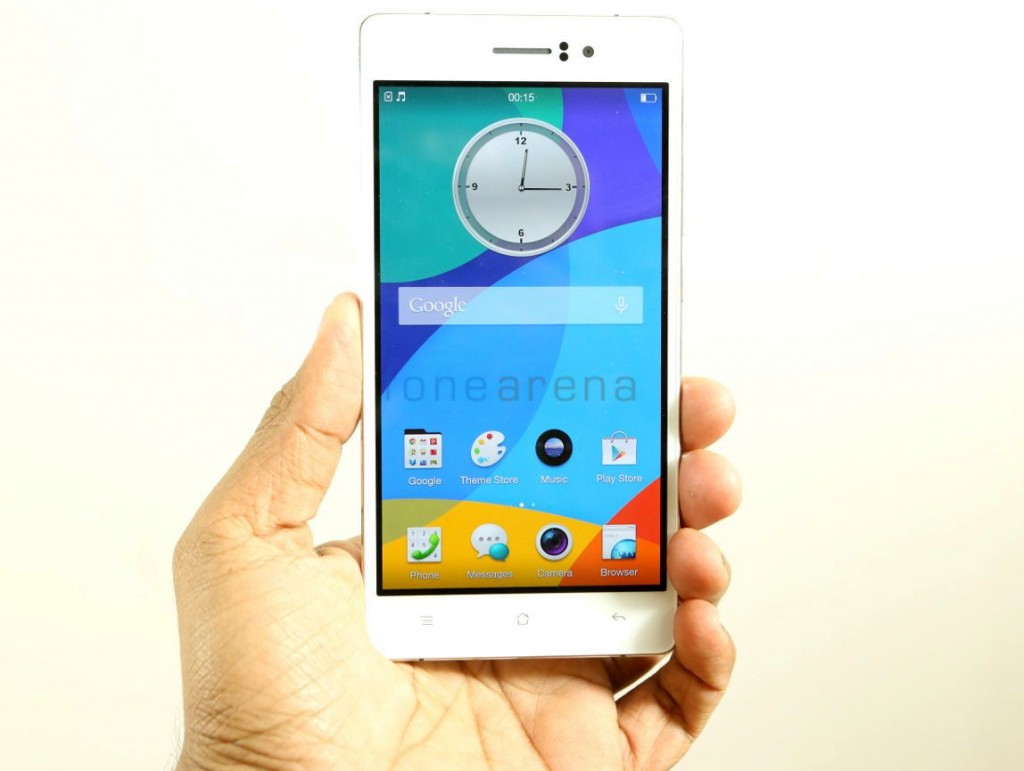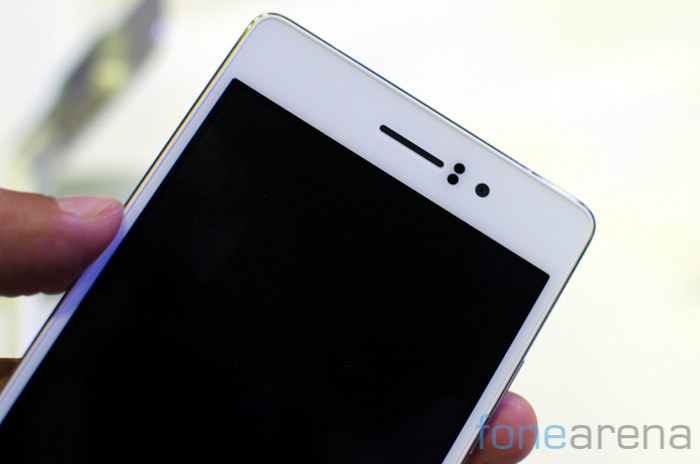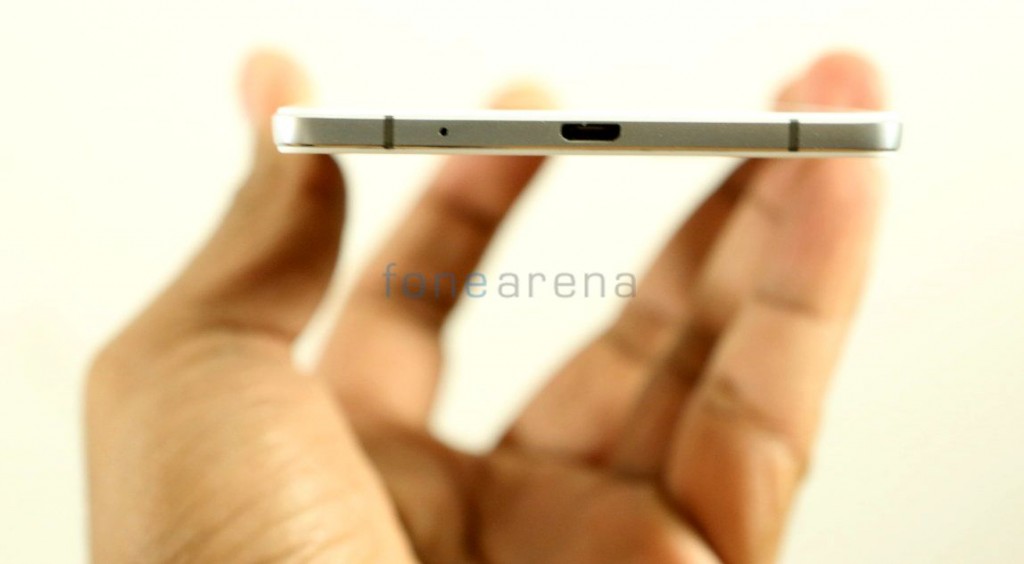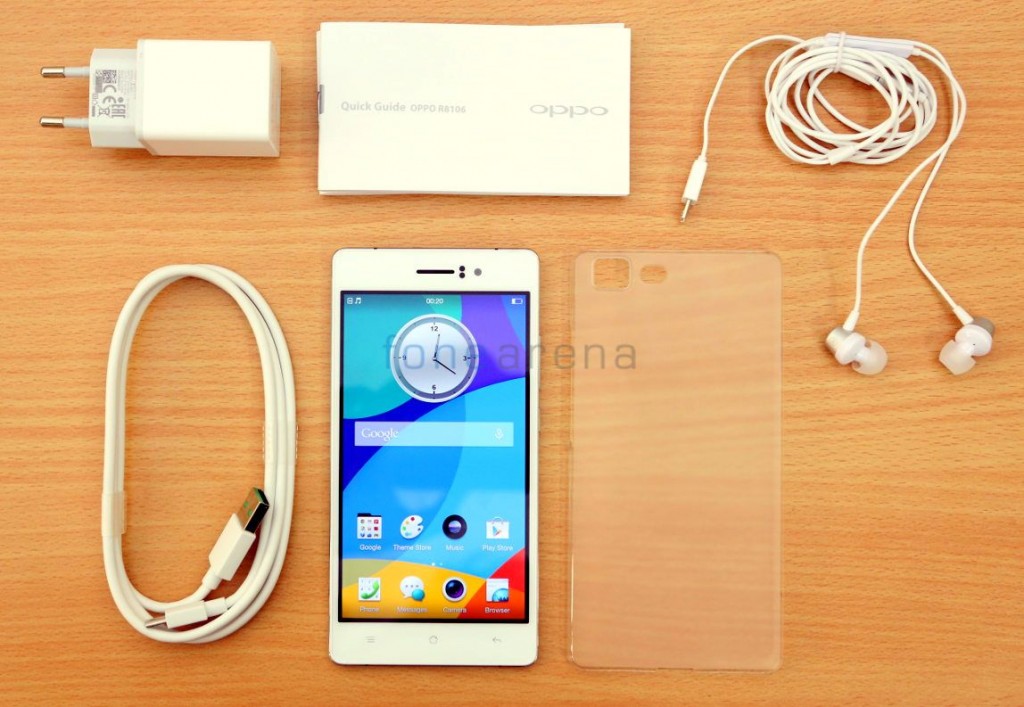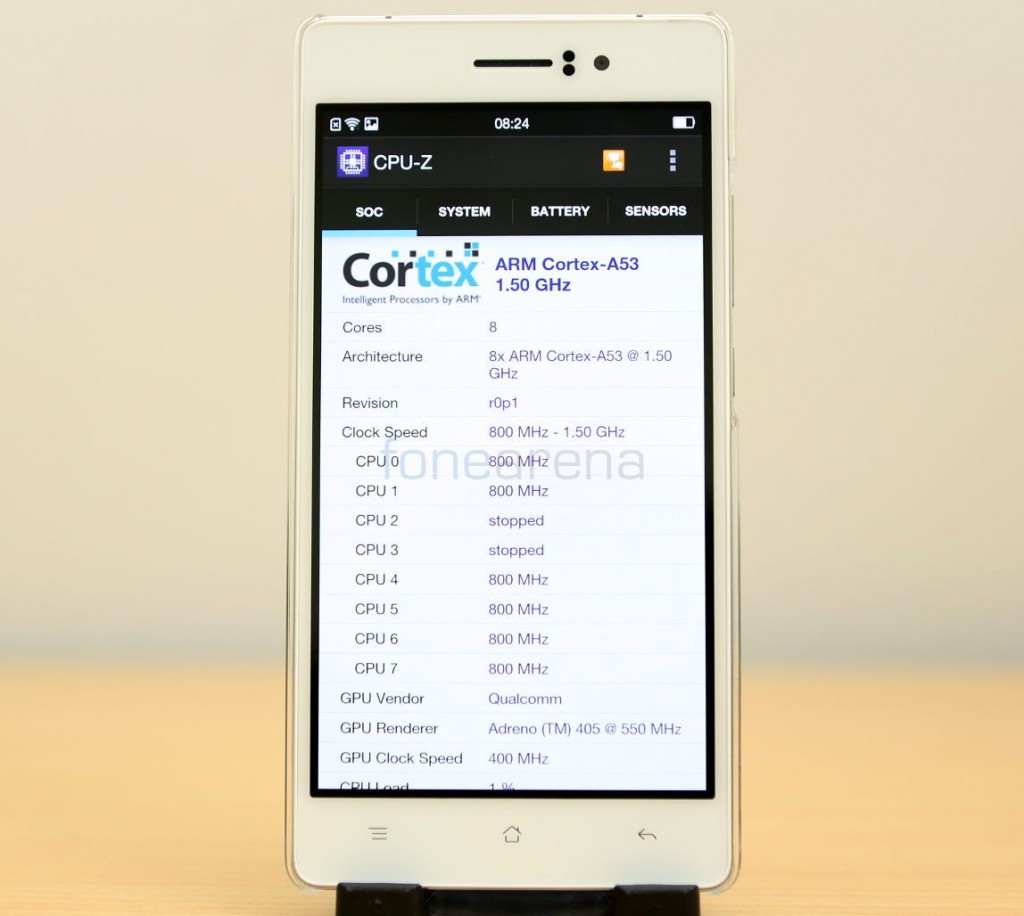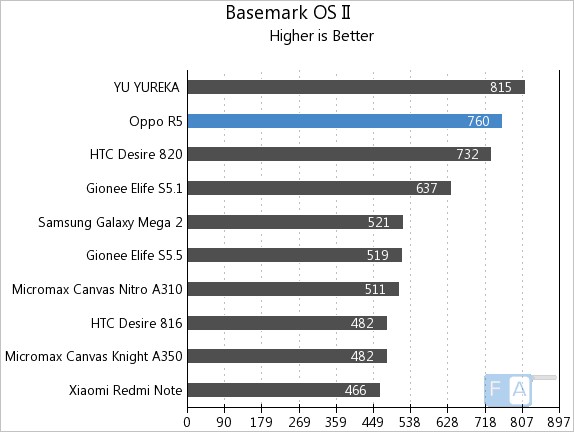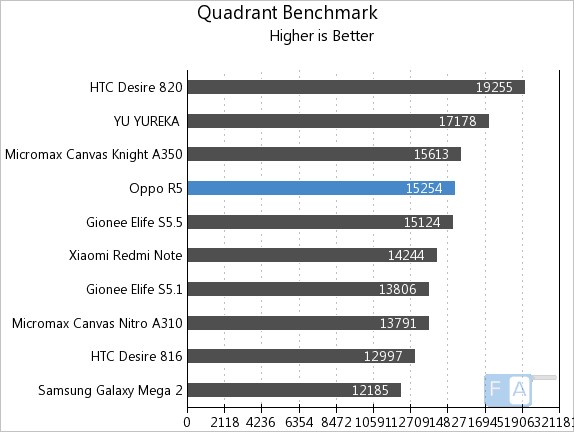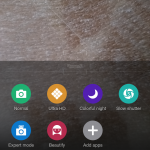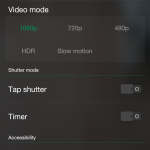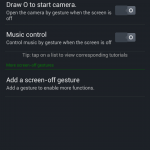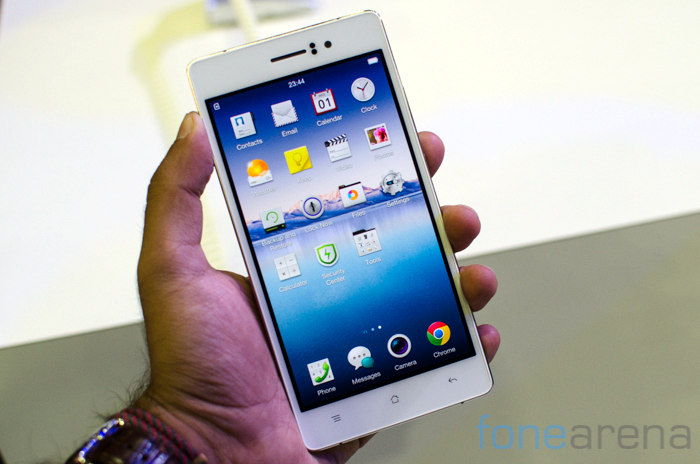When touchscreens happened, the keys disappeared, and suddenly, we had a lot of sleek devices, telling us science fiction-to-fruition is indeed possible. It was simple, you didn’t need depth for even the thinnest of keyboards and it was just a screen and glass on top of other complicated electronics. So, then thinning of the other parts and refinement of the glass (did you know, Gorilla Glass 2 had a 20% reduction in thickness vs 1?) were the subsequent steps to get the slimmest device possible, and it seems the Chinese have broken new ground.
The Oppo R5 was overshadowed by the flagship N3 at its launch event, yet it managed to stand out, primarily because of breaking new ground in thinness. It was, at launch, the world’s slimmest smartphone, an engineering achievement. Vivo might have quickly leapfrogged Oppo with a thinner (4.75mm vs 4.85mm) X5 max, which had a 3.5mm headphone jack, to much of everyone’s surprise. Even then, the R5 still remains one of the most shockingly thin devices ever made. Hence, it comes with a price tag that makes you wonder if the thinness, in an otherwise mid-range smartphone, is really worth the money.
The Oppo R5 is really thin, which I will try not to re-emphasize from here-on, but yes, it’s thin enough to be called sleek. The word “Sleek” also carries with it, the expectations of a sharply designed product with materials that look and feel premium. With sharp curves and flat sides, the R5 has achieved that look. With a hand-polished metallic body at the back and clear thin glass at the front, it has achieved the feel that one would expect from a sleek device.
The matte texture of the metal is really fine, providing a smooth cold touch. Yes, that also raises concerns of the heating, which does rear its head, but only rarely thanks to the transforming phase-shifting material inside the phone. This material is made of metal, resin and other composite things which we don’t need to go detail into, because it ultimately reduces heat, which is what we should care about. The rare times are when the processor is running at higher clock speeds during gaming and other intensive activities, like recording a video.
There is a 5.2 inch full HD screen on this phone, and as predicted, this is an AMOLED screen. Closely bonded glass, which has let Oppo achieve its goal, makes the display shine in every angle possible, but the black border slightly irked us, initially. May be, if the R5 had a black version, would it have mattered, is something to ponder upon. Anyways, the display is solid. It has got all the characteristics of a good AMOLED screen, that include saturated colours, high brightness and contrast. It was nice for watching well produced videos.
Occupying space above the display in a sea of white, are the earpiece, the 5MP selfie camera and the usual couple of sensors. Below the display are the three capacitive shortcuts. The metallic sides have chamfered edges that gleam, with a slightly different texture from the back that improves grip. The top right houses the power switch and the volume rockers while the lone SIM card slot sits at the bottom left.
The bottom of the phone has the micro USB port, which you would need to use for charging, data transfer and for music.
The R5 has a USB headphones bundled in the box, so keep it safe, not many replacements out there. The bottom also houses the primary microphone and the two plastic strips meant to enhance the antenna signal in a overwhelmingly metallic phone.
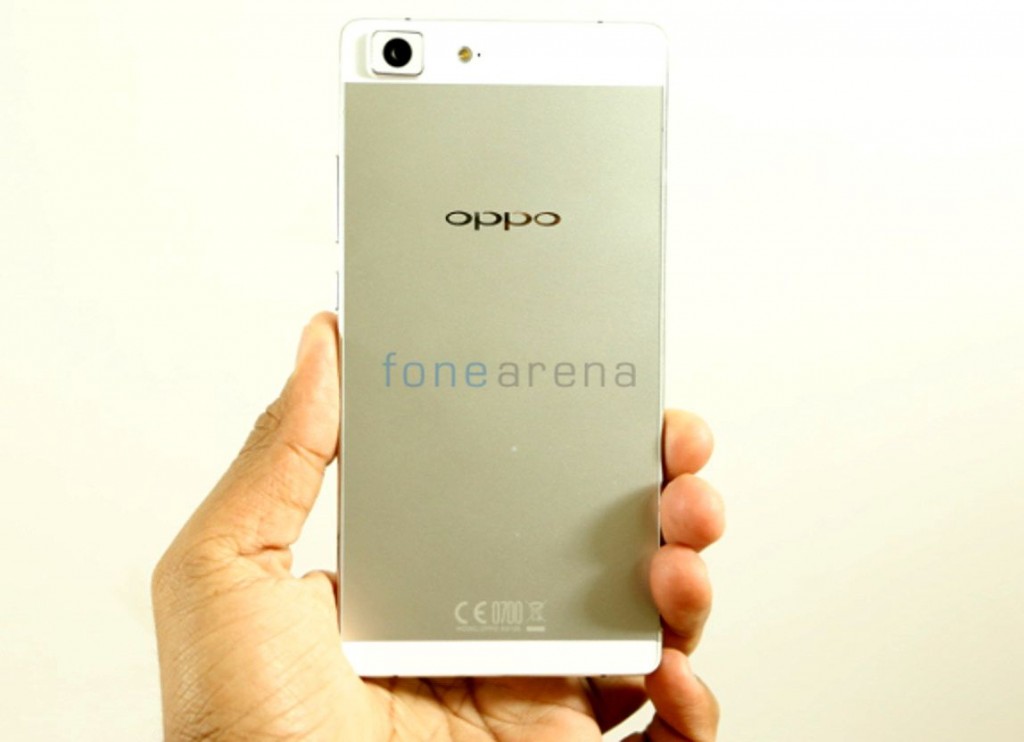
Moving to the back, we have the 13 megapixel sitting on top of a raised platform. Oppo had decided to not make a compromise on the camera, it looks like, because in the overall design, it looks absolutely out of place. However, the images and videos from the camera are really decent, which we have come to expect from a premium phone these days. On the other hand, it also acts as protection from the metallic body, which might have been subjected to serious wear and tear. So, in hind sight, this seems like a good decision, despite the visual disturbance.
The camera unit, based on a BSI sensor, matches expectations, in line with what we have come to expect from Oppo. The images are detailed, video recording is better these days and overall, in most lighting and scene conditions, it does what it’s supposed to do. With Oppo specific advantages such as the 50 MP “Ultra” HD mode, the re-focus functionality and generally better algorithms, you get good media output.
Powering the phone, under the hood, is the new Snapdragon 615 processor, the first 64-bit capable Octa core processor. All eight cores are based on the A53 architecture, with four running at 1.5 GHz (slightly under clocked from 1.7) and the rest at 1.0 GHz. This processor has already been in used in devices like the Yu Yureka and the HTC Desire 820, both notorious for their heating problems. But thankfully, Oppo has handled it better, with the phone not heating up much, except in CPU-intensive scenarios, as mentioned earlier. This tends to be a slight compromise sometimes, but not a deal breaker. To stress the chip out, we had run benchmarks on this device and this is how it turned out it in some –
The one on the top is a GPU intensive benchmark while the one on the bottom is balanced. In both the cases, it seems to have performed a bit slower than other phones with the same chip, which might be a result of under clocking the GHz out of the box. But real life performance is obviously as smooth as one would expect, which also includes the help of optimized software.
httpv://www.youtube.com/watch?v=SOyXqRWXdCU
Software on the Oppo R5 is Color OS, in its latest form, on top of Android 4.4 Kitkat. No, Lollipop-based custom ROMs are only starting to arrive on the scene these days, so it might be a while until the phone gets the upgrade. Still, Color OS is feature rich, but we are sad at the removal of the app drawer, which brings it in line with customer expectations in its homeland, China. The UI is now just pages of app icons, widgets and folders, but of course, you still have the same neat design and all the customization options that you usually get. The effects are now more refined though, with iOS 7-like gaussian blurs and similarly minimalistic icons in controls. Visual upgrades aside, it also seems well optimized so we didn’t seem much of lag. With the ample 2 GB of RAM, we didn’t find any slow downs in multitasking either.
It’s interesting to note that interface not only takes cues from iPhone, but MIUI v6 too, with round audio controls and other minor UI features. This could be a variation of MIUI for all we know. Other features that Oppo is usually famous for, like off-screen gestures, are present on the R5 too.
Courtesy Oppo Website
The sealed 2000 mAH battery inside the phone is quite decent for daily use. The capacity of the battery is less indeed, and it shows during the performance too, with it running out at the end of a heavy-use day, but what saves it is VOOC charging. This (or a variation of it) is now trickling into other phones with chipset-level support in Snapdragon 805, but Oppo was the first one to openly come out with a quick charging solution, which manages to charge the battery in quick time. The R5 quickly charges to 15% is a matter of minutes, which should be useful for an urgent charge. However, you would need to carry the slightly big high-ampere charger around, in times of need.
The major irksome thing on the Oppo R5, apart from the minor black lining around the display and the lack of a micro SD expansion slot, is its price tag. The PC industry has trained a lot of people to believe in the power of anything “inside”, so a lot don’t seem to care about anything else, when going just by specifications. It’s fair enough, because consumers are obviously confused when a phone priced at Rs. 8,999 has the same processor and RAM as the one priced at Rs. 29,990, but the insides are not the R5’s primary strength, the outside is. It’s a beautifully made device, and a lot of care has gone into making it feel really premium. So, if you look at the R5 as a fashionable luxury phone, like many of the iPhone owners, then the price tag makes complete sense. The overall hardware and software experience on the phone is good enough to warrant that price tag, we feel, in assumption that you prefer Android and/or can’t afford an iPhone, but fall under the category of people looking to add a sleek phone to their fashionable life style.

